#green infrastructure
Text
As relentless rains pounded LA, the city’s “sponge” infrastructure helped gather 8.6 billion gallons of water—enough to sustain over 100,000 households for a year.
Earlier this month, the future fell on Los Angeles. A long band of moisture in the sky, known as an atmospheric river, dumped 9 inches of rain on the city over three days—over half of what the city typically gets in a year. It’s the kind of extreme rainfall that’ll get ever more extreme as the planet warms.
The city’s water managers, though, were ready and waiting. Like other urban areas around the world, in recent years LA has been transforming into a “sponge city,” replacing impermeable surfaces, like concrete, with permeable ones, like dirt and plants. It has also built out “spreading grounds,” where water accumulates and soaks into the earth.
With traditional dams and all that newfangled spongy infrastructure, between February 4 and 7 the metropolis captured 8.6 billion gallons of stormwater, enough to provide water to 106,000 households for a year. For the rainy season in total, LA has accumulated 14.7 billion gallons.
Long reliant on snowmelt and river water piped in from afar, LA is on a quest to produce as much water as it can locally. “There's going to be a lot more rain and a lot less snow, which is going to alter the way we capture snowmelt and the aqueduct water,” says Art Castro, manager of watershed management at the Los Angeles Department of Water and Power. “Dams and spreading grounds are the workhorses of local stormwater capture for either flood protection or water supply.”
Centuries of urban-planning dogma dictates using gutters, sewers, and other infrastructure to funnel rainwater out of a metropolis as quickly as possible to prevent flooding. Given the increasingly catastrophic urban flooding seen around the world, though, that clearly isn’t working anymore, so now planners are finding clever ways to capture stormwater, treating it as an asset instead of a liability. “The problem of urban hydrology is caused by a thousand small cuts,” says Michael Kiparsky, director of the Wheeler Water Institute at UC Berkeley. “No one driveway or roof in and of itself causes massive alteration of the hydrologic cycle. But combine millions of them in one area and it does. Maybe we can solve that problem with a thousand Band-Aids.”
Or in this case, sponges. The trick to making a city more absorbent is to add more gardens and other green spaces that allow water to percolate into underlying aquifers—porous subterranean materials that can hold water—which a city can then draw from in times of need. Engineers are also greening up medians and roadside areas to soak up the water that’d normally rush off streets, into sewers, and eventually out to sea...
To exploit all that free water falling from the sky, the LADWP has carved out big patches of brown in the concrete jungle. Stormwater is piped into these spreading grounds and accumulates in dirt basins. That allows it to slowly soak into the underlying aquifer, which acts as a sort of natural underground tank that can hold 28 billion gallons of water.
During a storm, the city is also gathering water in dams, some of which it diverts into the spreading grounds. “After the storm comes by, and it's a bright sunny day, you’ll still see water being released into a channel and diverted into the spreading grounds,” says Castro. That way, water moves from a reservoir where it’s exposed to sunlight and evaporation, into an aquifer where it’s banked safely underground.
On a smaller scale, LADWP has been experimenting with turning parks into mini spreading grounds, diverting stormwater there to soak into subterranean cisterns or chambers. It’s also deploying green spaces along roadways, which have the additional benefit of mitigating flooding in a neighborhood: The less concrete and the more dirt and plants, the more the built environment can soak up stormwater like the actual environment naturally does.
As an added benefit, deploying more of these green spaces, along with urban gardens, improves the mental health of residents. Plants here also “sweat,” cooling the area and beating back the urban heat island effect—the tendency for concrete to absorb solar energy and slowly release it at night. By reducing summer temperatures, you improve the physical health of residents. “The more trees, the more shade, the less heat island effect,” says Castro. “Sometimes when it’s 90 degrees in the middle of summer, it could get up to 110 underneath a bus stop.”
LA’s far from alone in going spongy. Pittsburgh is also deploying more rain gardens, and where they absolutely must have a hard surface—sidewalks, parking lots, etc.—they’re using special concrete bricks that allow water to seep through. And a growing number of municipalities are scrutinizing properties and charging owners fees if they have excessive impermeable surfaces like pavement, thus incentivizing the switch to permeable surfaces like plots of native plants or urban gardens for producing more food locally.
So the old way of stormwater management isn’t just increasingly dangerous and ineffective as the planet warms and storms get more intense—it stands in the way of a more beautiful, less sweltering, more sustainable urban landscape. LA, of all places, is showing the world there’s a better way.
-via Wired, February 19, 2024
#california#los angeles#water#rainfall#extreme weather#rain#atmospheric science#meteorology#infrastructure#green infrastructure#climate change#climate action#climate resilient#climate emergency#urban#urban landscape#flooding#flood warning#natural disasters#environmental news#climate news#good news#hope#solarpunk#hopepunk#ecopunk#sustainability#urban planning#city planning#urbanism
13K notes
·
View notes
Video
streets with rain gardens and streets without
#tiktok#rain gardens#rain garden#garden#gardening#water pollution#green infrastructure#air pollution#pollenators#solarpunk#solar punk
14K notes
·
View notes
Text
e360: You’ve been quoted as saying: “There’s no more natural nature. Now it’s a matter of design.” What did you mean by that?
Orff: We humans are profoundly impacting the planet. There is no “pure nature” that’s outside of us, untouched up there in the foothills somewhere. We’ve “made” the world what it is already, so now we need to take a very, very strong hand in the remaking. It is a matter of design in the sense that it requires work, intention, design, funding, political skills. It’s not a naive or nostalgic attempt to restore the past. Instead, it’s layering up natural systems to reduce risk, building this hybrid future of stewarded nature.
e360: In Staten Island you are building a breakwater offshore, but in other places you have advocated tearing down some built structures to allow water a place to go during floods.
Orff: We have to soften our shorelines, we need to remove roadways from critical migration paths. Otherwise, flash flooding will get worse, and our biodiversity will continue to plummet. So a big part of climate adaptation may simply be unbuilding what we’ve already built. Rather than thinking of design as something merely additive or “beautifying,” we need to think about undoing our environmental mistakes, like damming rivers, bulkheading our shorelines, and concretizing streams. We need to start making room for rivers and floods.
e360: We’ve tried to control nature with big infrastructure projects. But that can backfire, can’t it?
Orff: For decades, infrastructure has been constructed as “single-purpose,” often designed by engineers to isolate one element of a system and to solve one problem. For example, on Staten Island, during Superstorm Sandy, a levee designed to keep water out was overtopped, resulting in a “bathtub effect” that trapped water inside a neighborhood rather than keeping it out and resulted in several deaths. We try to lock natural systems in place. But, of course, that is not the way that natural systems respond, and it is wholly insufficient for a climate-changed environment where we’re experiencing more intense rain in many regions, where we are facing more extreme heat, where sea levels are rising. The old rules, frankly, no longer apply.
135 notes
·
View notes
Text
#permaculture#city planning#solarpunk#renewableenergy#renewables#sustainability#green future#green infrastructure#green technology#functional supply chains
58 notes
·
View notes
Text
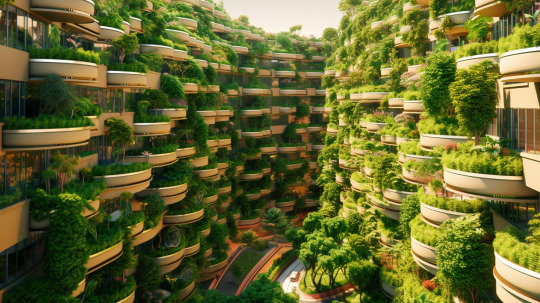
#sustainable living#ecofriendly#environmental concept art#green city#green infrastructure#sustainability#utopia#green living#architecture#nature#naturecore#digital art#EcoApartment
56 notes
·
View notes
Photo

Landscape - Modern Landscape
Photo of a mid-sized modern full sun rooftop mulch landscaping.
2 notes
·
View notes
Photo
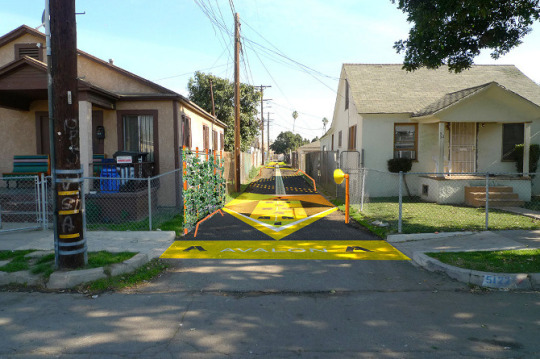
L.A.’s ‘Green Alley’ Experiments Are Working (2023)
The project, built in collaboration with the Trust for Public Land, was part of a bigger vision for a network of similar infrastructure throughout the neighborhood. South L.A. has about 300 miles of alleyways — about one-third of all the alleys in the city — and due to the combination of low-lying land, paved-over surfaces, and aging sewer infrastructure, it also has the city’s second-highest rate of flooding complaints. The green alleys, once there were enough of them, could help. Mendez said yes, his neighbors did the same, and within two years, the muddy, uneven asphalt was gone. Now just beyond Mendez’s back fence is an attractive right-of-way signified by green-and-white-striped poles planted with citrus trees at each entrance. Students from the elementary school across the street help maintain the alley through regular clean-ups, and Mendez says he feels comfortable walking his dog there, even late at night.
As wave after wave of atmospheric river storms slammed the city over the last month, green alleys like Mendez’s were put to their first real test. The city received as much rainfall between the start of the rainy season in October and the end of January as it usually gets by the end of April. But as that deluge pummeled South L.A., the resulting stormwater had more opportunities to sink back into the earth: filtering through a row of permeable pavers, directing to pocket planters where creeping fig vines twirl up garage walls, or vanishing into grates labeled “drains to groundwater.” One alley even has a center-running bioswale where tiny notches along the curbs nudge water into rectangles of drought-tolerant landscaping. Mendez’s corner of the neighborhood fared well — no water issues, he said: “Right now, it’s okay.”
Meet the Equipo Verde: allies for alleys (2016)
The Trust for Public Land’s Avalon Green Alley demonstration project aims to repurpose nearly a mile of neglected alleyways in South Los Angeles into a walkable, bikeable, beautiful public resource. Sonia is part of a growing group of dedicated locals—mostly moms and grandmothers from her Avalon neighborhood—who are digging in to make the vision a reality.
8 notes
·
View notes
Text
Turin; Italy.

The city of Turin is located in the region of Piedmont in the northwest of Italy and is home to 880,000 people. To overcome social, economic and environmental challenges, Turin initiated a transformation to become more sustainable and liveable. This is reflected in the current “2030 Action Plan for a Sustainable and Resilient Turin” which aligns with the city’s participation in the “Trees in Cities Challenge”. The pledge to plant 1,000 trees is implemented along with the development of a “Sustainable Urban Forest Management Plan” - one of the first plans of that kind in Italy – and the creation of a “Strategic Green Infrastructure Plan” to guide the management of, and investment in, green infrastructure. Together with a corporate sponsor, Turin planted 3,000 trees and overall 18,000 trees, considerably exceeding its pledge of 15,000.
#trees#towns#turin#italy#trees in cities#urban trees#tree planting pledges#urban forestry#green infrastructure#urban october
2 notes
·
View notes
Photo



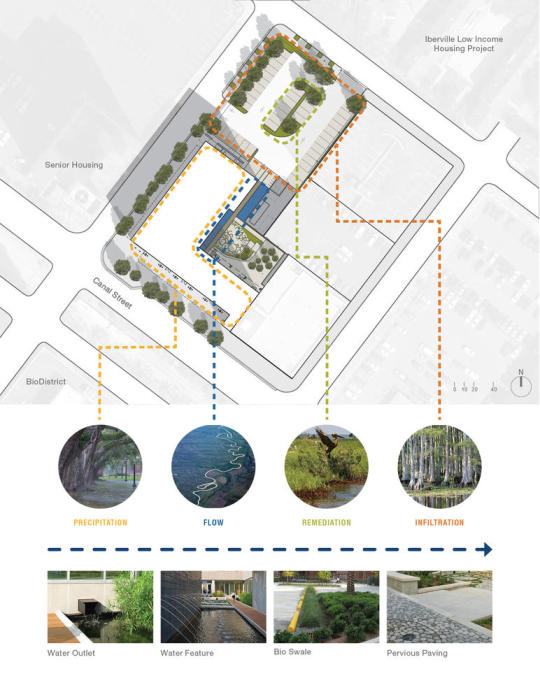

EDR_BIO INNOVATION CENTER, NEW ORLEANS_WATER STRATEGIES
http://edrpl.us/blog/2016/7/7/green-infrastructure-a-primer
https://www.eskewdumezripple.com/new-orleans-bioinnovation-center.html
All rainwater that falls on the roof, along with all air-conditioning condensate, is collected in the courtyard water feature which then overflows into the main storm water storage cisterns in the parking area.
https://www.aiatopten.org/node/447
_ik
5 notes
·
View notes
Text
Infrastructure Resilience – safeguarding gains in sustainable development (HLPF 2023 Side Event.
This side event will discuss opportunities and strategies to enhance investments in quality, reliable, sustainable and resilient infrastructure, including regional and transborder infrastructure in the context of the most vulnerable countries such as the LDCs, LLDCs and SIDS.
It will contextualize the current state of play in increasing the resilience of hard, soft and natural infrastructure across different infrastructure systems, including water and transportation. Good practices related to gray and green/blue infrastructure, including nature-based solutions, will be presented. Panellists will also discuss next steps to implement the infrastructure-related calls for action in the GA Resolutions 77/282 and 77/289.
This event is being organized by the United Nations Office for Disaster Risk Reduction and is co-sponsored by the Co-Chairs of the Group of Friends of Disaster Risk Reduction (Permanent Missions of Australia, Indonesia, Norway and Peru), as well as the Permanent Mission of India, the Permanent Mission of Poland and the Coalition for Disaster Resilient Infrastructure.

#Gray Infrastructure#green infrastructure#Blue Infrastructure#Sustainable Development#disaster risk reduction#HLPF23#sdg11#infrastructure#natural disasters#natural hazards
2 notes
·
View notes
Link
Sustainable road construction has a direct impact on the environment and contributes to global carbon footprints. It is possible to build infrastructure more sustainably and environmentally friendly by using these materials and techniques.
The construction of more sustainable roads involves many factors, from reducing the amount of carbon dioxide that is released to the atmosphere, reducing waste during construction, and incorporating more recycled material, to extending the cycle of pavement life and reducing the need for future maintenance.
Recycled Materials
When building roads, recycled materials like crushed concrete, asphalt, and glass cut down on waste and the need for new materials. The creation of new materials produces more greenhouse gas emissions than recycled materials do.
Permeable Pavement
A type of pavement known as permeable pavement allows water to permeate it, minimizing storm-water runoff and enhancing water quality. This kind of pavement, which is often built of porous concrete or asphalt, might help lessen the urban heat island effect.
Biogenic Asphalt Technology
In the form of a road, biological asphalt binder technology effectively locks away carbon captured during the growth of biomass or plant based materials.
Approximately 6 tons of carbon dioxide equivalents can be captured and stored per kilometer of road. Most of this carbon will not reenter the atmosphere since asphalt can be recycled at the end of the pavement's life. This assists our customers in achieving net zero.
Green Infrastructure
Additionally, incorporating green infrastructure such as bioswales and rain gardens can improve the quality of the water by reducing storm-water runoff. To absorb and treat stormwater before it enters rivers, several measures can be incorporated into the roadside design.
Warm Mix Asphalt
Warm mix asphalt has a low carbon footprint, offering an average reduction of 8-10% in carbon dioxide emissions. In addition to improving productivity, warm mix asphalts are also more time efficient, since they require less time to reach trafficking temperatures and are completed quicker.
Read more
5 notes
·
View notes
Text

The Most Important Thing That's Probably Missing From Your Backyard
I’ve gathered all the seeds for 10 herbs, inside the Medicinal Garden Kit. All these seeds have been handpicked from the very best plants, as I wanted nothing less than premium quality seeds.
#native plants#trees#gradens#gardening#plants#bird#birds#animals#urban wildlife#nature#ecology#environment#conservation#tiktok#rain gardens#rain garden#garden#water pollution#green infrastructure#air pollution#pollenators#solarpunk#solar punk
4 notes
·
View notes
Video
Rain Gardens
https://bluethumb.org/raingardens/
#tiktok#rain gardens#rain garden#gardens#DIY garden#green infrastructure#gardening#garden#solarpunk#solar punk
164 notes
·
View notes
Link
"In the United States or Canada, there is an aesthetization of gardens, which are larger, maintained, organized, and marketed by real estate developers to raise the price of the surroundings," explains Anguelovski.
"We have been able to corroborate our initial hypothesis that greener cities become more unequal and inequitable," she explains while stressing that this strong relationship between the greening of municipalities in the 1990s-2000s and the gentrification that occurred in the 2010s has been demonstrated.
"We find green infrastructures that can be more disruptive than therapeutic for health. The research also shows how green gentrification contributes to the socio-cultural exclusion of vulnerable residents, especially immigrants and racialized people," adds Anguelovski.
[...]
"These results do not mean that green infrastructure is negative, quite the contrary, as it has been shown to have enormous benefits for physical and mental health. The problem is the lack of prioritization of issues of equity and justice in green urban planning," says Anguelovski, who reminds us that what is needed is for city councils to be aware of this and to accompany this process with policies that control property speculation in the area, promote social housing developments, limit short-term rental licenses and/or encourage the creation of support networks between neighbors, local businesses, and the protection of more informal green spaces.
103 notes
·
View notes
Text
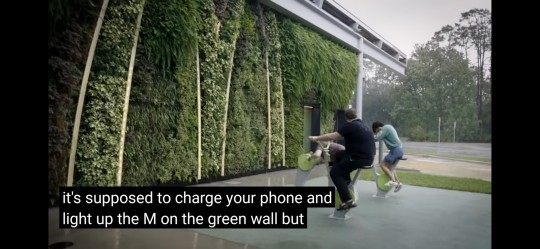
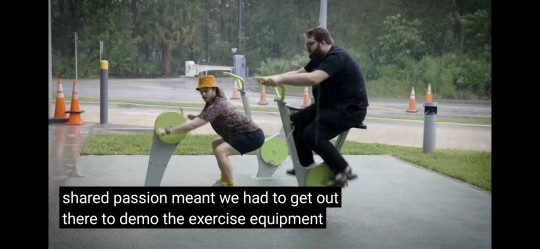
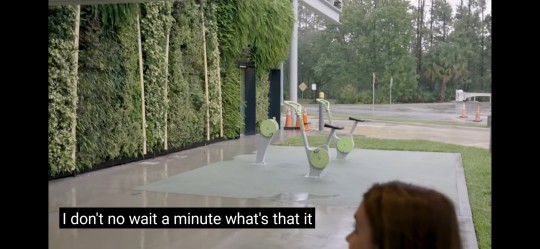
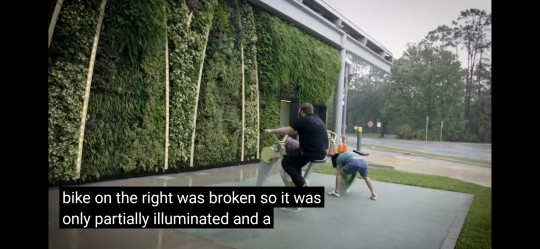
Place has the right spirit tho
Everything could have a backup kinetic genie. The gyms should be full of these things and it should go back into the grid. We're burning calories for nothing and cutting down the forests that feed us air just to make the calories we waste.
59 notes
·
View notes

